Reduced V-ATPase activity in the trans-Golgi network causes oxylipin-dependent hypocotyl growth Inhibition in Arabidopsis
- PMID: 18441211
- PMCID: PMC2390726
- DOI: 10.1105/tpc.108.058362
Reduced V-ATPase activity in the trans-Golgi network causes oxylipin-dependent hypocotyl growth Inhibition in Arabidopsis
Abstract
Regulated cell expansion allows plants to adapt their morphogenesis to prevailing environmental conditions. Cell expansion is driven by turgor pressure created by osmotic water uptake and is restricted by the extensibility of the cell wall, which in turn is regulated by the synthesis, incorporation, and cross-linking of new cell wall components. The vacuolar H(+)-ATPase (V-ATPase) could provide a way to coordinately regulate turgor pressure and cell wall synthesis, as it energizes the secondary active transport of solutes across the tonoplast and also has an important function in the trans-Golgi network (TGN), which affects synthesis and trafficking of cell wall components. We have previously shown that det3, a mutant with reduced V-ATPase activity, has a severe defect in cell expansion. However, it was not clear if this is caused by a defect in turgor pressure or in cell wall synthesis. Here, we show that inhibition of the tonoplast-localized V-ATPase subunit isoform VHA-a3 does not impair cell expansion. By contrast, inhibition of the TGN-localized isoform VHA-a1 is sufficient to restrict cell expansion. Furthermore, we provide evidence that the reduced hypocotyl cell expansion in det3 is conditional and due to active, hormone-mediated growth inhibition caused by a cell wall defect.
Figures
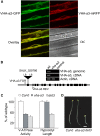
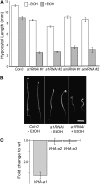

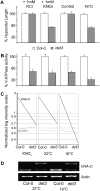
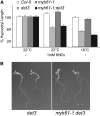
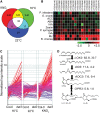
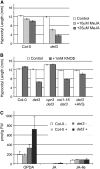
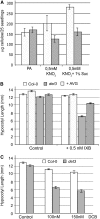
References
-
- Alonso, J.M., et al. (2003). Genome-wide insertional mutagenesis of Arabidopsis thaliana. Science 301 653–657. - PubMed
-
- Arioli, T., et al. (1998). Molecular analysis of cellulose biosynthesis in Arabidopsis. Science 279 717–720. - PubMed
-
- Bouton, S., Leboeuf, E., Mouille, G., Leydecker, M.T., Talbotec, J., Granier, F., Lahaye, M., Hofte, H., and Truong, H.N. (2002). QUASIMODO1 encodes a putative membrane-bound glycosyltransferase required for normal pectin synthesis and cell adhesion in Arabidopsis. Plant Cell 14 2577–2590. - PMC - PubMed
-
- Cabrera y Poch, H., Peto, C., and Chory, J. (1993). A mutation in the Arabidopsis DET3 gen uncouples photoregulated leaf development from gene expression and chloroplast biogenesis. Plant J. 4 671–682.
Publication types
MeSH terms
Substances
LinkOut - more resources
Full Text Sources
Other Literature Sources
Molecular Biology Databases
Miscellaneous

